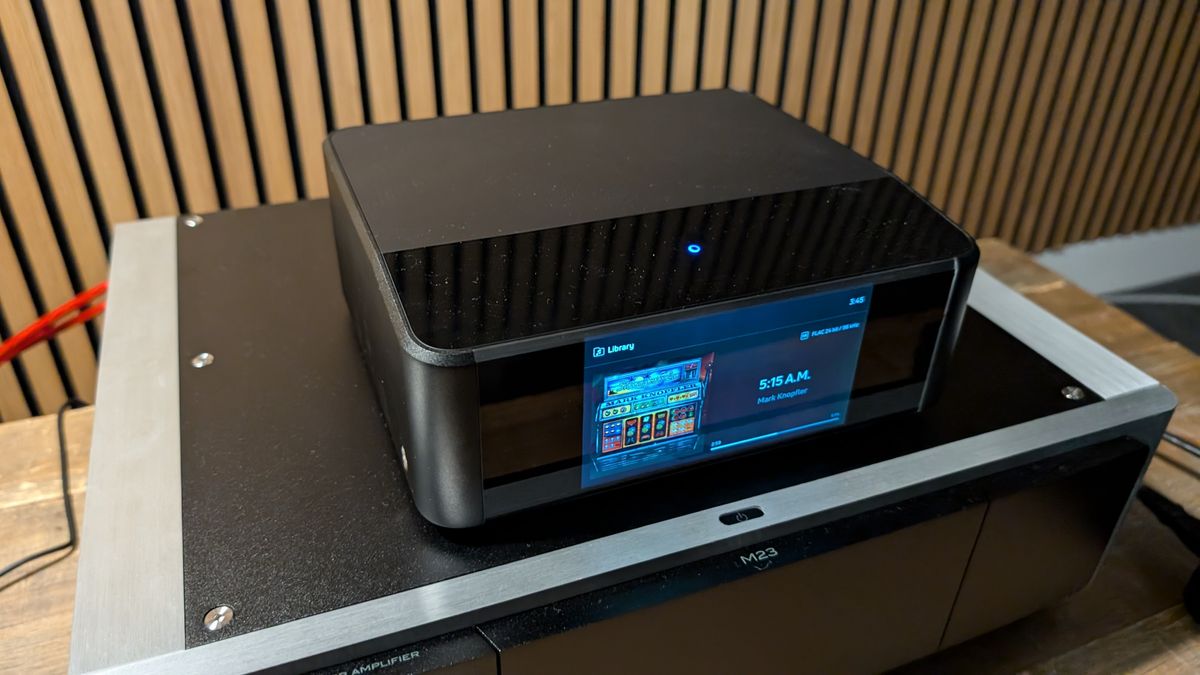The Bluesound Node Icon is the top option in the audio brand’s trio of new streamers, sitting above the new Node and entry-level Node Nano.
In that vein, Bluesound is pitching the Node Icon as the audiophile option in its new lineup, with representatives at the listening session I attended promising it will “win over even the most ardent of analogue hi-fi purists” with its “clear, separated, reference” sound.
But can it succeed in an increasingly full and competitive market that’s also being targeted by hi-fi heavyweights Naim and Cambridge Audio, and newcomers such as WiiM and Eversolo?
While we won’t be able to answer that until we get the Node Icon streamer into our dedicated listening rooms for a full test and comparison with the current competition, I got the chance to get hands on and have an initial listen to the new streamer at a press event – here are my initial impressions.
Price
The Bluesound Node Icon is set to retail for £899 / $999 / €1099 and will be available for pre-order globally from 17th October before shipping worldwide on 15th November.
That puts it squarely in competition with the five-star Cambridge Audio CXN100, which retails for a very similar price at £899 / $1049 / AU$1899, although this sub-£1000 price point is relatively sensible compared with the more premium models we rate highly from the likes of Audiolab, Naim and Linn.
The Icon is the priciest of the new 2024 Node range. The Node and Node Nano siblings are more affordable, retailing for £499 / $549 / €599 and £299 / $299 / €349 respectively.
Design
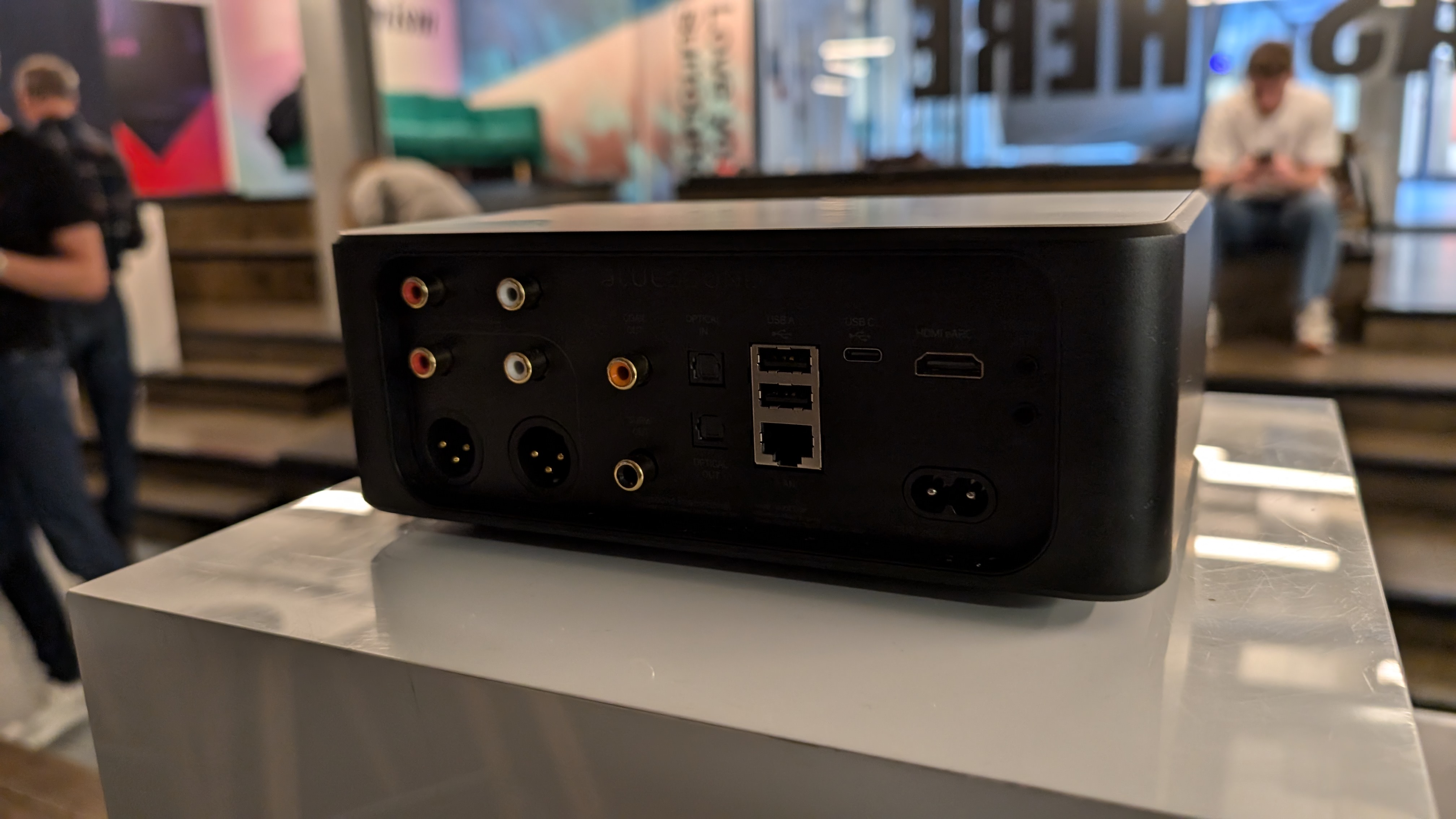
The Bluesound Node Icon is also the largest option in the company’s current lineup, but the unit is still fairly small, with a footprint similar in size to the dinky, more affordable Cambridge Audio MXN10, but sitting a couple of inches taller.
The unassuming black box features a suitably discreet design, with the main obvious feature being a 5-inch full colour screen on the device’s front panel, that shows one of three clock faces when the unit is on standby and track/album information when music is being played. It’s a departure from Bluesound, which hasn’t included a display screen on its streamers until now. For those who want to make it even more unassuming, the Icon’s screen can also be turned off completely when not in use.
Up top there’s a shiny glass panel, which powers on to reveal the unit’s capacitive touch controls. While the controls felt reactive during the hands-on session, I did notice the shiny finish was a fingerprint magnet, to the point I had to repeatedly wipe it down just to get usable photos – this could be an annoyance for neat-freaks such as myself.
Twin headphone jacks are the only other obvious connections at the front, although they are placed at either side of the unit rather than directly on the front. The rest of the Icon’s connections are all housed around the back. These include RCA, coaxial, USB-A, USB-C and optical outputs, as well as optical and HDMI eARC inputs for those wanting to connect the unit to a TV.
The Icon is also the only new Node streamer to feature a balanced XLR output alongside RCA and optical inputs – a fact the Bluesound representative demoing the unit was keen to list as proof of its appeal to audiophiles that prefer balanced connections.
Internally, it’s also slightly different to its cheaper siblings, featuring a dual-mono DAC design with twin ESS ES9039Q2M SABRE DACs and an integrated power supply “specially designed to reduce noise and produce a clearer signal”. The dual design aims to let each chip devote its full processing power to each channel in a bid to offer a more separated, “pure” sound, according to Bluesound.
Features
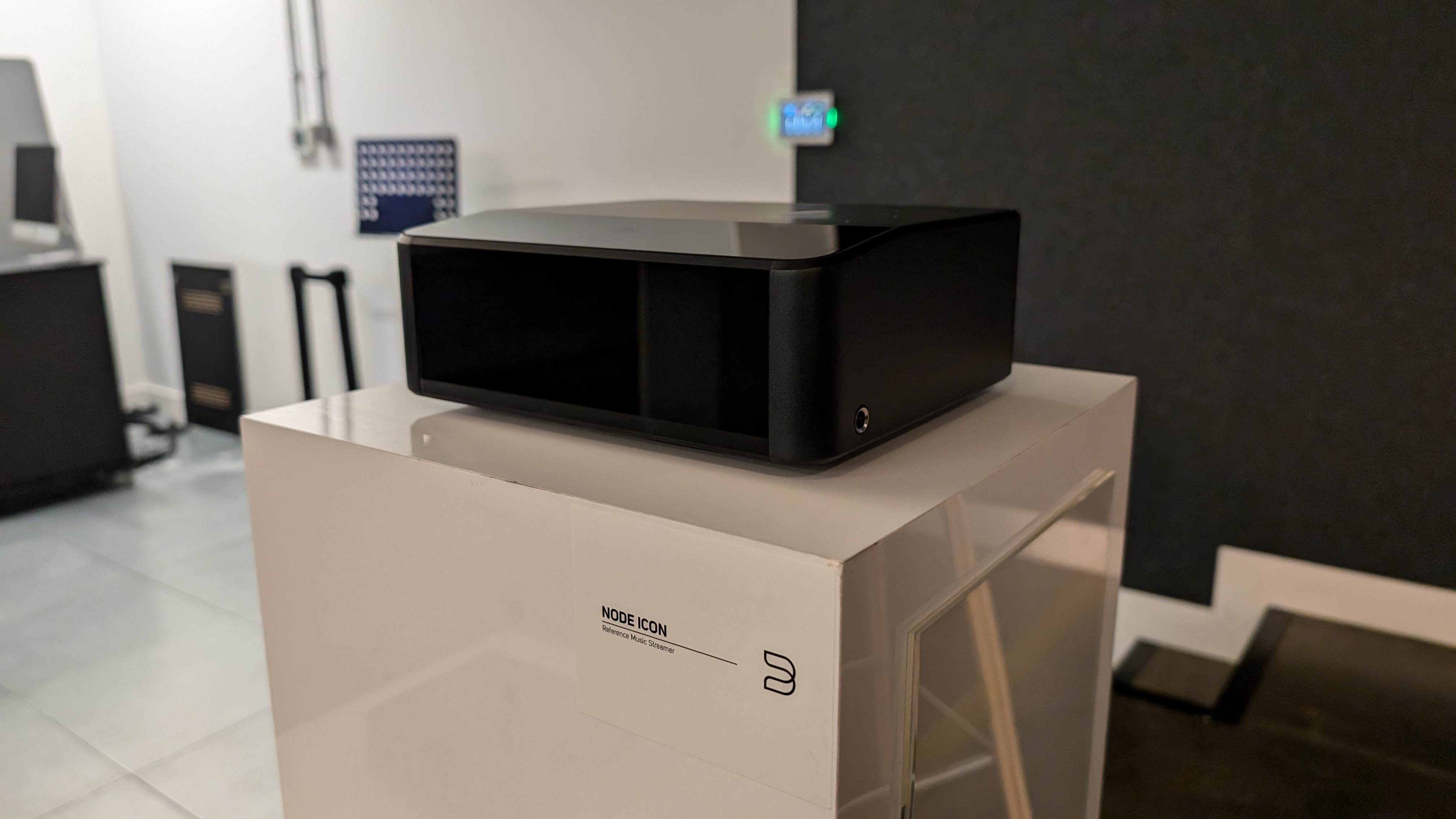
The Node otherwise shares a very similar feature set to its siblings and rival products, including the CXN100, with wired and wi-fi network connectivity available. Streaming support is there for all the usual suspects, including Amazon Music, Tidal and Spotify alongside Apple AirPlay 2 and aptX Adaptive Bluetooth 5.2. Hi-res audio up to 24-bit/192kHz and MQA files are supported on the Icon, and it’s also the only one of Bluesound’s new Nodes to support DSD256 files.
Outside of this, the continued use of the proprietary BluOS streaming platform means the Node Icon can wirelessly connect to other Bluesound speakers and other BluOS-compatible stereo components (such as those from Dali, NAD, Cyrus, Roksan, PSB and more) for a multi-room system.
Like the standard Node, it is also Dirac Live capable. However, it does not come with a subscription or licence included. So you’ll need to pay for one to activate the feature on Bluesound’s website, where you can also purchase a measuring microphone kit. For those unfamiliar with Dirac, it is room correction technology designed to optimise the streamer’s performance to its room environment.
Sound
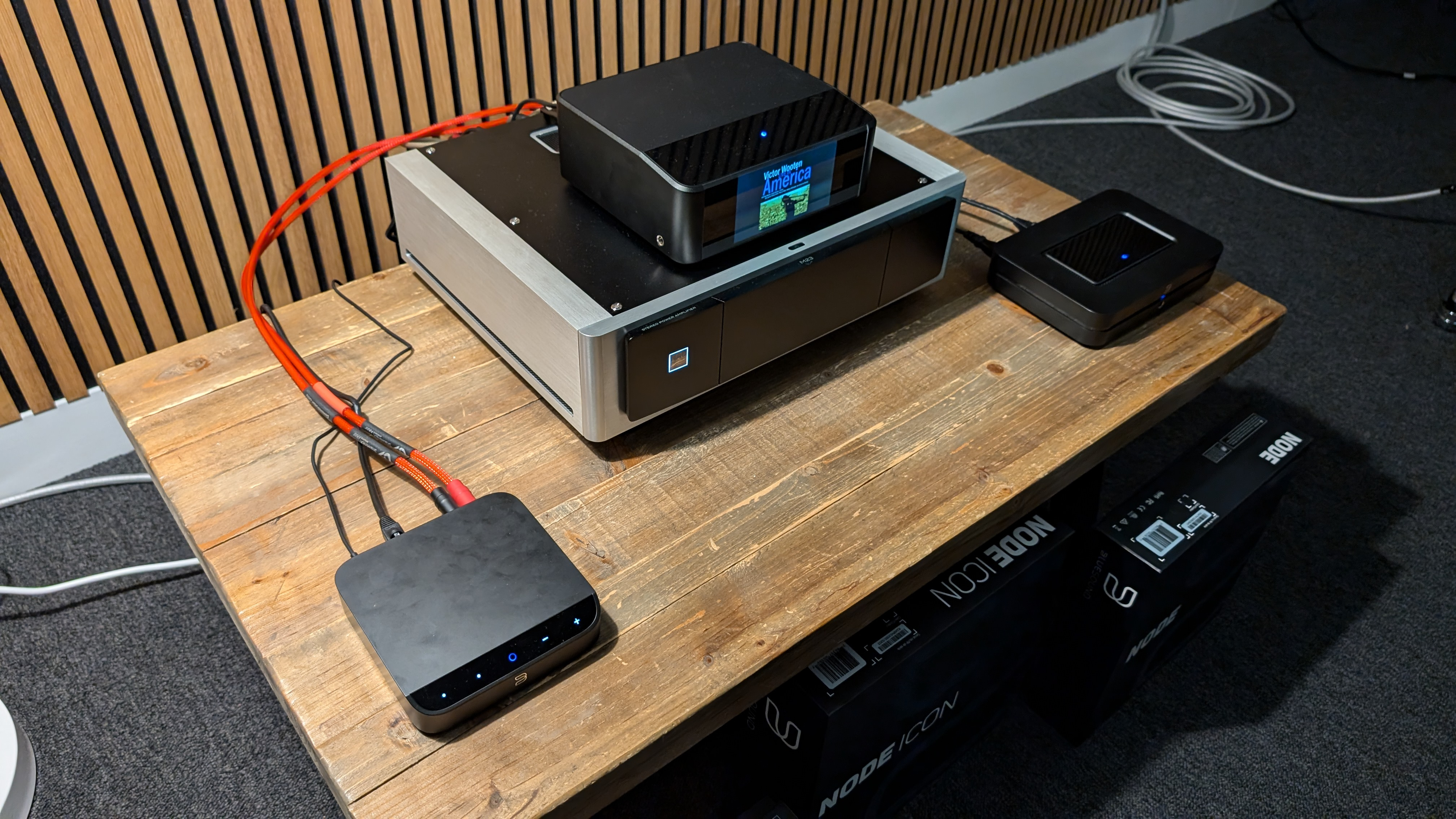
My listening time with the Bluesound Node Icon was brief, and I should also caveat that the demo was in an unfamiliar room with unfamiliar partnering kit – conditions in which it is difficult to make any final, concrete calls on a new product’s audio quality.
But the demo was instructive. During it, I listened to the same three hi-res tracks on the Icon, the standard Node and affordable Node Nano. Each was plugged into a system comprising a NAD M23 stereo power amplifier and a pair of Synchrony T800 Tower speakers.
Starting with a hi-res FLAC file of Marian Hill’s pop track Differently, the Node Icon streamer sounded clear and solid. The acidic synths of the intro had heft and seemed to be under control, as well as being blissfully free of any unintentional distortion – despite the demo being fairly loud. Listening to the track on the Node, Nano and then Icon one after the other, the flagship model delivered an increased level of separation between each element of the sound. The higher frequency percussion section felt more distinct in particular, to my ears.
Moving on to Yao Si Ting’s moody Speak Softly Love, the Icon delivered a crisp, clean rendition of the song, with the movements of the guitarist’s hands along the fretboard and gently plucked notes coming through pronounced and with a decent amount of clarity. The melancholy violin entered with an impactful swoon, and her vocals seemed to retain decent levels of subtle but important dynamics, letting the track retain its vulnerable, emotive tone during the demo. Sibilance also didn’t rear its ugly head during my listening, even during Ting’s particularly breathy vocal sections.
Changing gears to bass-maestro Victor Wooten’s rhythmically complex Miller Time, the slap and pop-heavy song was delivered with a good amount of gusto in the demo. Every slap sounded clear with no part of the constantly changing jazz explosion feeling lost or lacking Wooten’s iconic energy. Overall this left me hopeful and wanting more dedicated listening time with the streamer.
Early verdict
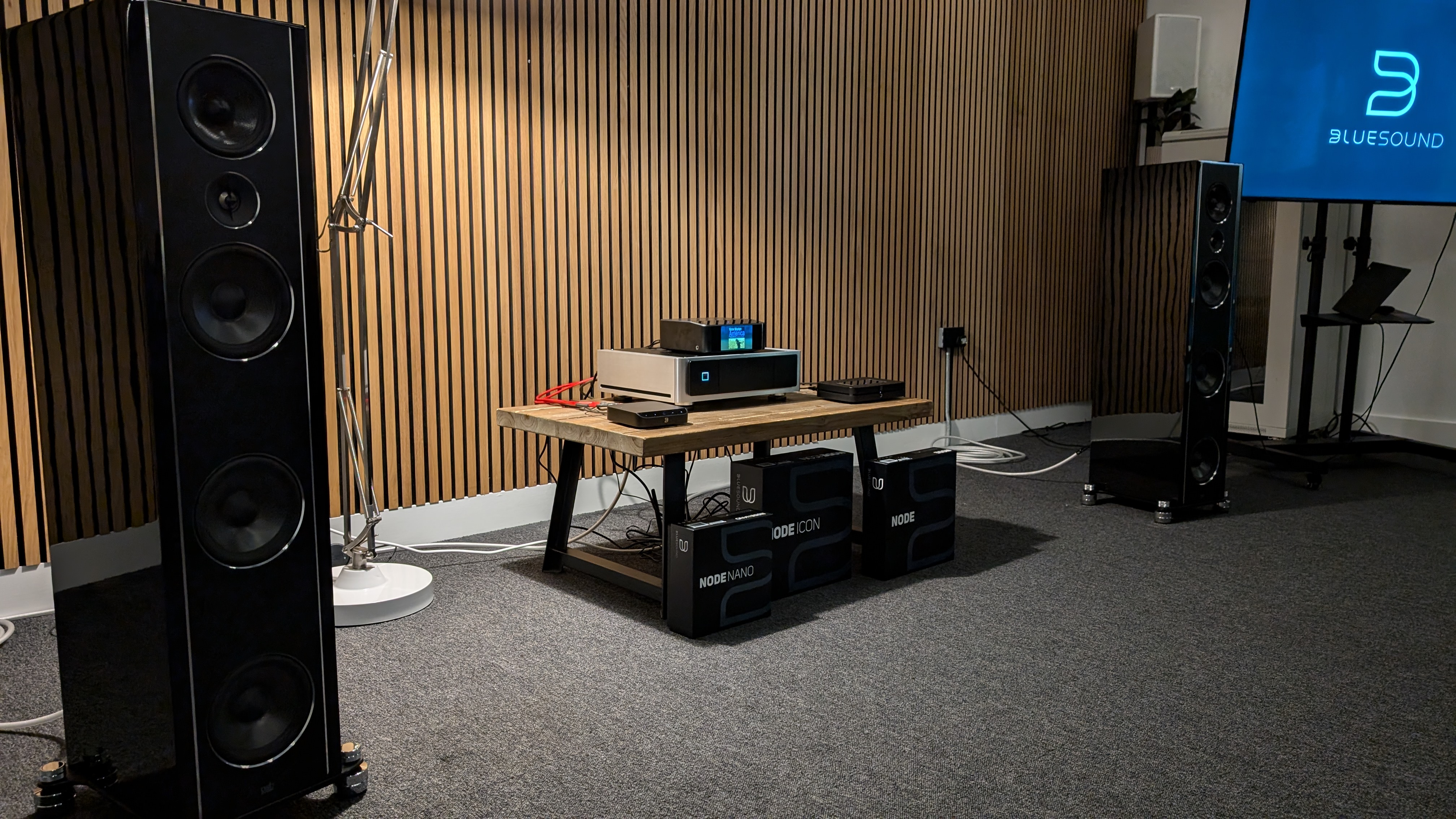
The network streaming market is already full of fantastic options, especially at the Icon’s price. But from my brief listening session, the unit showed a lot of promise.
We’ll be curious to see how it performs after a thorough testing in our listening rooms against its direct competitor, the Cambridge Audio CXN100, when we get a review sample in due course.
MORE:
These are the best music streamers money can buy
We rate the best stereo amps
Our picks of the best floorstanding speakers

